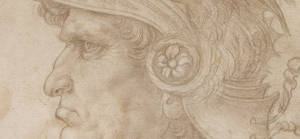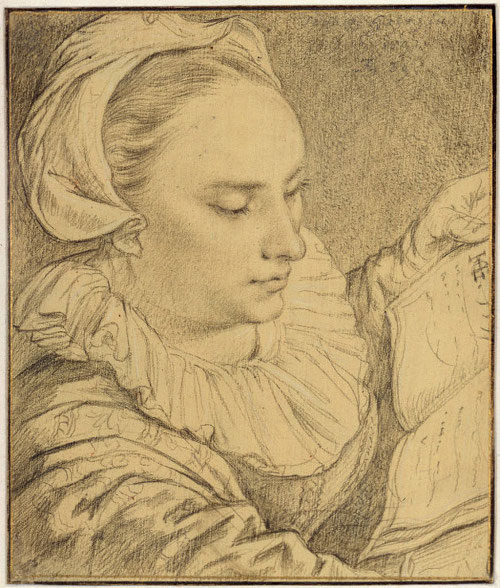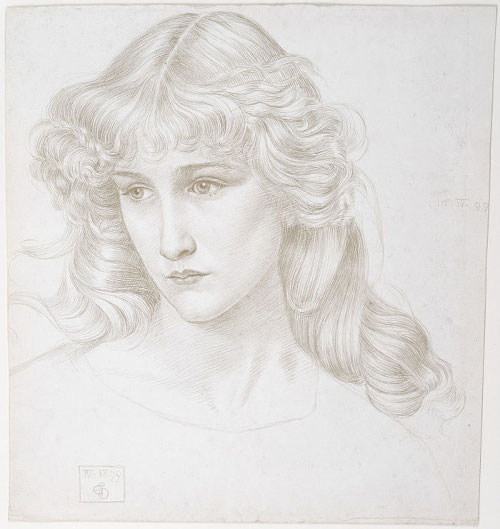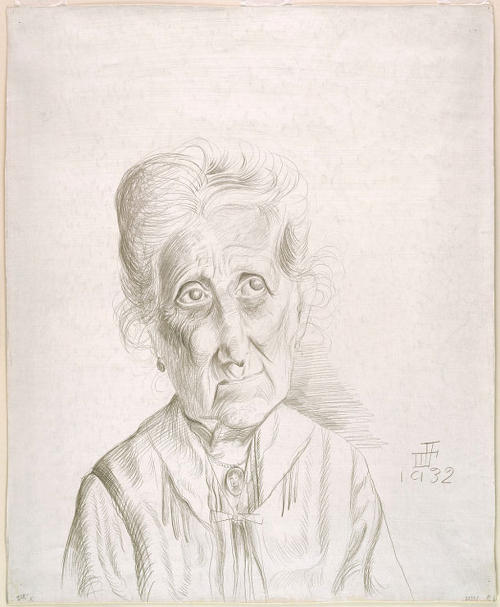
I joined the British Museum, which gives me free access to their shows, members' lounge and a few other things. My second visit as a member was to the exhibition Drawing in silver and gold, a look at the metalpoint drawing style (my first was to the new Celts show but more on that later).
On the north side, up the stairs, this is in the museum's print and drawing display space, a lovely big room, well set up to show off works by Leonardo, Raphael, Dürer and other masters.

Above: detail from Leonardo da Vinci,
A Bust of a Warrior, c. 1475/1480, silverpoint
Metalpoint (link to silverpoint) is a drawing technique used from medieval times, through the renaissance and even to the present day (with a 19th Century revival). It uses a metal stylus (sharp or blunt) to "draw" on a prepared surface (slightly abrasive ground): the stylus leaving a small amount of the metal on the paper, giving the drawing.
I wasn't sure why the artist would use metalpoint over a pencil (graphite) but a helpful page of information in the Cornelissen art shop window (round the corner from the museum) explained. Graphite pencils were not invented until the 16th and (properly) 17th Centuries, and artists wanted something more permanent for their drawings than charcoal.
Some beautiful, detailed and delicate drawings on display. Some favourite artists below. I was particularly struck by how good the work of Hendrick Goltzius was.
Below: Hendrick Goltzius, Young Woman Reading a Book (Portrait of Sophia Goltzius, Sister of the Artist?), Seen from Above, 1591, metalpoint (probably silverpoint) on prepared paper or parchment.

Below: Joseph Edward Southall, Head of a Girl, 1899, metalpoint (probably silverpoint) with scratching on prepared paper

Below: Otto Dix, Old Woman, 1932, metalpoint (probably silverpoint) and graphite (?) on prepared paper,

Dix is perhaps better known as a one of the Nazi's least favourite artists, someone who created some horrible depictions of war, wounds and disfigurement. This picture has a lot of charm, even wistfulness about it however, a true character.
More interesting detail can be found on the British Museum's blog.



